L’allaitement protège durablement la santé des mamans en réduisant les risques d’AVC et de cancers du sein. Découvrez tous les bienfaits de l’allaitement pour les mamans dans cet article.
Sommaire des bienfaits de l’allaitement pour les mamans
C’est l’un des secrets les mieux gardés au sujet de l’allaitement : il protège les bébés, mais aussi la santé des mamans sur le long terme.
Il vous suffit de choisir d’allaiter votre bébé pendant ses six premiers mois (au moins) pour vous protéger de nombreuses maladies tout au long de votre vie.
Non seulement l’allaitement aide votre utérus à retrouver sa taille initiale, à réguler vos hormones, à puiser dans vos graisses dites “brunes” réputées indéstockables, mais il diminue aussi les risques de diabète de type 2, de maladies cardiovasculaires ou encore de la maladie d’Alzheimer.
Ces incroyables bénéfices sont rarement expliqués aux femmes enceintes lors de leur préparation à l’accouchement, ou dans les réunions sur l’allaitement proposés par les maternités.
Pour rattraper ce manque d’informations, je vous propose que nous regardions ensemble tous les bienfaits de l’allaitement pour les mamans, études scientifiques à l’appui.

1. L’allaitement peut vous aider à perdre du poids durablement
De nombreuses études médicales ont prouvé que l’allaitement aidait à perdre du poids après l’accouchement.
Allaiter demande beaucoup d’énergie et puise dans vos graisses dites “de réserve”.
Les besoins en énergie d’une femme qui allaite augmentent d’environ 500 calories par jour et son équilibre hormonal est très différent de la normale (2, 3, 4).
Les kilos que vous avez pris pendant la grossesse seraient d’ailleurs physiologiquement destinés à l’allaitement.
D’après une étude publiée dans le Journal of the American Dietetic Association (1), les femmes qui allaitent ont perdu plus de poids et de tour de hanche que celles qui n’allaitent plus un mois après l’accouchement.
Pourtant, nous ne sommes pas toutes logées à la même enseigne. Alors que certaines femmes semblent prendre du poids pendant l’allaitement, d’autres en perdent très facilement en continuant à manger beaucoup.
A cause de ces changements hormonaux, les femmes qui allaitent ont plus d’appétit et peuvent être plus enclines à stocker la graisse pour produire du lait (5, 6, 7). Pendant les 3 premiers mois après l’accouchement, les femmes qui allaitent peuvent perdre moins de poids que les femmes qui n’allaitent pas, et peuvent même en prendre un peu (8).
Toutefois, après 3 mois d’allaitement, elles connaissent une augmentation de la combustion des graisses (9, 10, 11).
Et entre 3 à 6 mois après l’accouchement, il a été prouvé que les mamans qui allaitent perdent plus de poids que les mères qui n’allaitent pas (12, 13, 14).
2. Allaiter aide votre utérus à se rétracter plus rapidement
Pendant la grossesse, votre utérus se développe énormément. De la taille d’une poire, il finit par remplir presque tout l’espace de votre abdomen.
Après l’accouchement, il passe par un processus appelé “involution utérine”, qui l’aide à revenir à sa taille de départ. C’est grâce à ce procédé que votre ventre va peu à peu reprendre sa taille et sa forme initiale.
L’ocytocine, une hormone qui augmente tout au long de la grossesse, contribue à faire avancer ce processus. Votre corps sécrète de grandes quantités d’ocytocine pendant le travail pour vous aider à expulser votre bébé et à réduire les saignements post-partum (15).
La sécrétion d’ocytocine augmente aussi pendant l’allaitement et cette hormone encourage les contractions utérines, réduit les saignements et favorise le retour de l’utérus à sa taille initiale.
Des études médicales ont prouvé ce phénomène en montrant que les mamans qui allaitent ont généralement moins de perte de sang après l’accouchement et une rétractation beaucoup plus rapide de l’utérus (16).
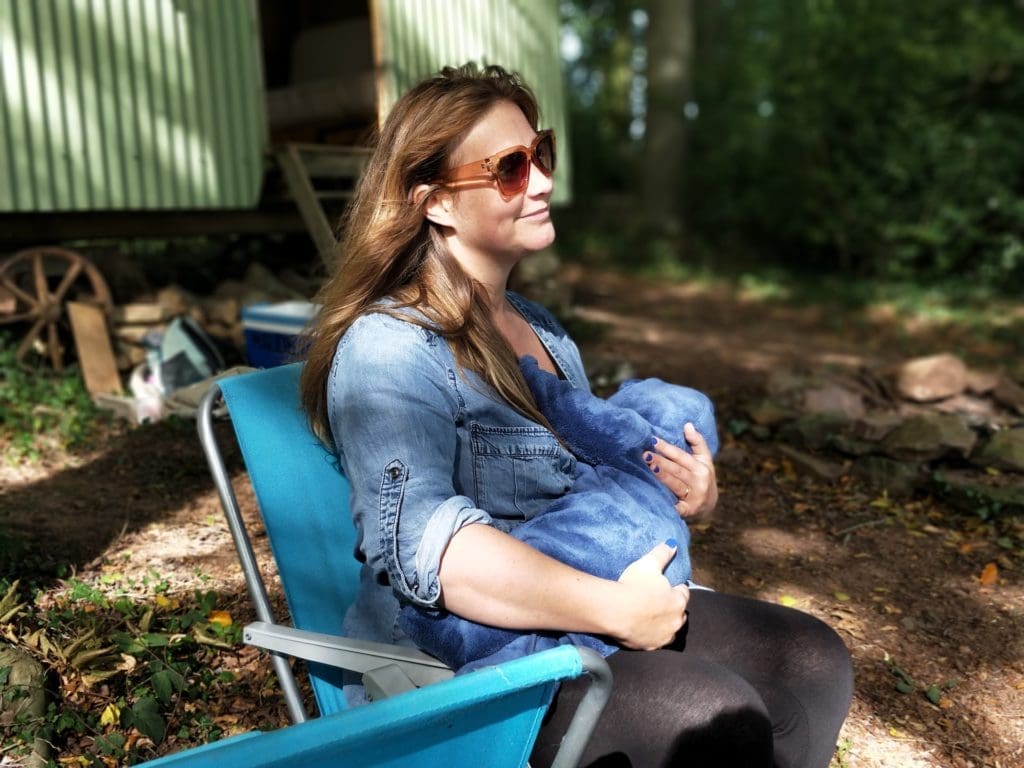
3. Les mères qui allaitent ont un risque moins élevé de faire une dépression post-partum
La dépression du post-partum nous fait peur à toutes.
Non seulement parce qu’on sait qu’elle peut toucher n’importe laquelle d’entre nous – elle affecte jusqu’à 20% des mères (17) – mais aussi parce que ces conséquences peuvent être graves si elle est mal suivie ou non diagnostiquée.
Or, plusieurs études ont montré que les femmes qui allaitent semblent moins susceptibles de développer une dépression post-partum, comparativement aux mères qui sevrent leur bébé très tôt ou n’allaitent pas (18, 19).
Il est connu que l’allaitement provoque des changements hormonaux qui favorisent l’attachement d’une maman pour son bébé (20).
La cause de ces bienfaits vient de l’augmentation du taux d’ocytocine produite pendant l’accouchement et l’allaitement (21).
L’ocytocine semble avoir des effets anti-anxiété à long terme.
Elle encourage également la création de liens forts entre une maman et son bébé en stimulant des régions spécifiques du cerveau qui favorisent l’attachement, la détente et le bien-être (22, 23).
Ces effets peuvent également expliquer en partie pourquoi les mamans qui allaitent ont un taux inférieur de négligence et de maltraitance, comparativement à celles n’allaitent pas.
Une étude menée sur quinze ans par le service pédiatrique de l’université de médecine de Houston a montré que le taux de maltraitance et de négligence maternelle était presque trois fois plus élevé pour les mères qui n’allaitaient pas, par rapport à celles qui allaitaient (24).
Mais pas de panique, cette étude n’est faite que d’associations statistiques. Ne pas allaiter votre bébé ne signifie bien-sûr pas que vous le négligez…
Ces études montrent juste à quel point l’allaitement a des pouvoirs incroyables et insoupçonnés sur notre cerveau.
4. L’allaitement réduit les risques d’AVC, de cancers et de dégénérence cognitive
L’un des avantages le plus incroyable de l’allaitement et dont on parle très peu est qu’il assure aux mamans une protection à long terme contre le cancer et plusieurs autres maladies graves.
Le temps qu’une femme passe à allaiter dans sa vie est lié à une diminution des risques des cancers du sein et des ovaires (25). En fait, les femmes qui allaitent pendant au moins un an au cours de leur vie ont un risque inférieur de 28% de développer un cancer du sein et des ovaires.
Et ce n’est pas tout puisque chaque année d’allaitement maternel est associé à une diminution de 4,3% de risque de cancer du sein (26, 27).
Des études récentes menées aux États-Unis indiquent également que l’allaitement peut protéger contre le syndrome métabolique, l’association d’une série de problèmes de santé dus à un mauvais métabolisme corporel, qui augmentent le risque de maladies cardiaques et d’autres problèmes de santé (28, 29, 30).
Une étude récente que les femmes qui allaitent pendant 1 à 2 ans de leur vie ont un risque de 10 à 50% plus faible de souffrir d’hypertension artérielle, d’arthrite, de cholestérol, de maladies cardiaques et de diabète de type 2 (31).
Une étude menée en 2023 a montré que chez les femmes qui allaitent, on observe une baisse remarquable de la pression artérielle et une amélioration des niveaux du cholestérol pendant les 3 ans qui suivent l’accouchement. (32)
Il a enfin été prouvé que les femmes qui ont allaité ont une meilleure santé cognitive plus tard dans la vie et moins de risques de souffrir de démence ou de la maladie d’Alzheimer. (33)
5. L’allaitement peut bloquer vos règles
L’allaitement va vous donner encore un peu de ce répit si agréable pendant la grossesse : vos règles ne vont pas revenir tout de suite. Plusieurs études médicales ont d’ailleurs prouvé que ce phénomène pouvait être utilisé comme contraceptif pendant les premiers mois après l’accouchement (34, 35).
Toutefois, notez que cela peut ne pas être une méthode totalement efficace de contraception et votre médecin ou votre sage-femme vous déconseilleront certainement de l’appliquer.
Il vaut mieux considérer ce répit de quelques mois supplémentaires comme une chance de vous refaire ainsi un stock de nutriments bénéfiques à votre santé et à celle de votre bébé.
Vous pourrez aussi d’autant plus apprécier ces premiers temps si précieux avec votre nouveau-né, sans vous soucier de la période de vos règles.
6. Allaiter vous fait aussi économiser du temps et de l’argent
C’est peut-être l’argument que j’aurais du mettre en tête de liste tellement il est évident : l’allaitement est entièrement gratuit et ne nécessite que très peu d’effort.
En choisissant d’allaiter, vous n’aurez pas à :
- Dépenser de l’argent en lait maternisé (50 à 70 euros par mois), biberons, stérilisateur, eau minérale, et chauffe-biberon.
- Calculer combien votre bébé a besoin de boire chaque jour.
- Passer du temps à nettoyer et stériliser vos biberons.
- Réchauffer les biberons au milieu de la nuit (ou du jour).
- Vous demander en permanence si le lait est à bonne température. Votre lait sera toujours à bonne température et prêt à boire.
Et comme bonus supplémentaire, l’allaitement vous donne une raison valable pour vous asseoir, allonger vos jambes, vous détendre et profiter des merveilleux liens qui sont en train de se tisser entre vous et votre bébé.
Et vous ? Avez-vous allaité votre ou vos bébés ? Comment l’avez-vous vécu ? Avez vous ressenti ces avantages ? Si vous êtes enceinte, étiez vous informée de tous ces bénéfices de l’allaitement pour les mamans ? Partagez votre expérience avec nous dans les commentaires ci-dessous !
Anne-Laure Wright
Sources sur les bienfaits de l’allaitement pour les mamans
(1) Claude-Suzanne Didierjean-Jouveau, “L’allaitement maternel”, Editions Jouvence, 2003. Extrait publié sur le site de la Leche League France : http://www.lllfrance.org/index.php?option=com_k2&view=item&id=1106&Itemid=130
(2) Butte NF, Hopkinson JM, Mehta N, Moon JK, Smith EO, “Adjustments in energy expenditure and substrate utilization during late pregnancy and lactation”, American Journal of Clinical Nutrition, 1999. Trouvé sur : http://www.ncbi.nlm.nih.gov/pubmed/9989696/
(3) Butte NF, Wong WW, Hopkinson JM, “Energy requirements of lactating women derived from doubly labeled water and milk energy output”, The Journal of Nutrition, 2001. Trouvé sur : http://www.ncbi.nlm.nih.gov/pubmed/11208938
(4) Butte NF, King JC, “Energy requirements during pregnancy and lactation”, Public Health Nutrition, 2005. Trouvé sur : http://www.ncbi.nlm.nih.gov/pubmed/16277817
(5) Dall SR, Boyd IL, “Evolution of mammals: lactation helps mothers to cope with unreliable food supplies”, Proceedings Biological Sciences, 2004. Trouvé sur : http://www.ncbi.nlm.nih.gov/pubmed/15451695/
(6) Ostrom KM, “A review of the hormone prolactin during lactation”, Progress in Food and Nutrition Science, 1990. Trouvé sur : http://www.ncbi.nlm.nih.gov/pubmed/2092340
(7) Kopelman PG, “Physiopathology of prolactin secretion in obesity”, International Journal of Obesity and Related Metabolic Disorders, 2000. Trouvé sur : http://www.ncbi.nlm.nih.gov/pubmed/10997622
(8) Stuebe AM, Rich-Edwards JW, “The reset hypothesis: lactation and maternal metabolism”, American Journal of Perinatology, 2009. Trouvé sur : http://www.ncbi.nlm.nih.gov/pubmed/19031350
(9) Jarlenski MP, Bennett WL, Bleich SN, Barry CL, Stuart EA, “Effects of breastfeeding on postpartum weight loss among U.S. women”, Preventive Medicine, 2014. Trouvé sur : http://www.ncbi.nlm.nih.gov/pubmed/25284261
(10) Dewey KG, Heinig MJ, Nommsen LA, “Maternal weight-loss patterns during prolonged lactation”, American Journal of Clinical Nutrition, 1993. Trouvé sur : http://www.ncbi.nlm.nih.gov/pubmed/8338042/
(11) Ohlin A, Rössner S, “Maternal body weight development after pregnancy”, International Journal of Obesity, 1990. Trouvé sur : http://www.ncbi.nlm.nih.gov/pubmed/2341224/
(12) van Raaij JM, Schonk CM, Vermaat-Miedema SH, Peek ME, Hautvast JG, “Energy cost of lactation, and energy balances of well-nourished Dutch lactating women: reappraisal of the extra energy requirements of lactation”, American Journal of Clinical Nutrition, 1991. Trouvé sur : http://www.ncbi.nlm.nih.gov/pubmed/2000814
(13) Brewer MM, Bates MR, Vannoy LP, “Postpartum changes in maternal weight and body fat depots in lactating vs nonlactating women”, American Journal of Clinical Nutrition, 1989. Trouvé sur : http://www.ncbi.nlm.nih.gov/pubmed/2916446
(14) Baker JL, Gamborg M, Heitmann BL, Lissner L, Sørensen TI, Rasmussen KM, “Breastfeeding reduces postpartum weight retention”, American Journal of Clinical Nutrition, 2008. Trouvé sur : http://www.ncbi.nlm.nih.gov/pubmed/19064514
(15) Prevost M, Zelkowitz P, Tulandi T, Hayton B, Feeley N, Carter CS, Joseph L, Pournajafi-Nazarloo H, Yong Ping E, Abenhaim H, Gold I, “Oxytocin in pregnancy and the postpartum: relations to labor and its management”, Frontiers in Public Health, 2014. Trouvé sur : http://www.ncbi.nlm.nih.gov/pubmed/24479112/
(16) Negishi H, Kishida T, Yamada H, Hirayama E, Mikuni M, Fujimoto S, “Changes in uterine size after vaginal delivery and cesarean section determined by vaginal sonography in the puerperium”, Archives of Gynecoly and Obstetrics, 1999. Trouvé sur : http://www.ncbi.nlm.nih.gov/pubmed/10728621
(17) Pearlstein T, Howard M, Salisbury A, Zlotnick C., “Postpartum depression”, American Journal of Obstetrics and Gynecology, 2009. Trouvé sur : http://www.ncbi.nlm.nih.gov/pubmed/19318144/
(18) Henderson JJ, Evans SF, Straton JA, Priest SR, Hagan R.“Impact of postnatal depression on breastfeeding duration”, Birth, 2003. Trouvé sur : http://www.ncbi.nlm.nih.gov/pubmed/12911800
(19) Dennis CL, McQueen K, “Does maternal postpartum depressive symptomatology influence infant feeding outcomes?”, Acta Paediatrica, 2007. Trouvé sur : http://www.ncbi.nlm.nih.gov/pubmed/17391475
(20) Strathearn L, “Maternal neglect : oxytocin, dopamine and the neurobiology of attachment”, Journal of Neuroendocrinology, 2011. Trouvé sur : http://www.ncbi.nlm.nih.gov/pubmed/21951160/
(21) Broad KD, Lévy F, Evans G, Kimura T, Keverne EB, Kendrick KM, “Previous maternal experience potentiates the effect of parturition on oxytocin receptor mRNA expression in the paraventricular nucleus”, European Journal of Neuroscience, 1999. Trouvé sur : http://www.ncbi.nlm.nih.gov/pubmed/10564379/
(22) Febo M, Numan M, Ferris CF, “Functional magnetic resonance imaging shows oxytocin activates brain regions associated with mother-pup bonding during suckling”, Journal of Neuroscience, 2005. Trouvé sur : http://www.ncbi.nlm.nih.gov/pubmed/16354922/
(23) Febo M, Shields J, Ferris CF, King JA, “Oxytocin modulates unconditioned fear response in lactating dams: an fMRI study”, Brain Research, 2009. Trouvé sur : http://www.ncbi.nlm.nih.gov/pubmed/19766607
(24) Strathearn L, Mamun AA, Najman JM, O’Callaghan MJ, “Does breastfeeding protect against substantiated child abuse and neglect? A 15-year cohort study”, Pediatrics, 2009. Trouvé sur : http://www.ncbi.nlm.nih.gov/pubmed/19171613
(25) Stuebe AM, Willett WC, Xue F, Michels KB, “Lactation and incidence of premenopausal breast cancer: a longitudinal study”, Archives of Internal Medicine, 2009. Trouvé sur : http://www.ncbi.nlm.nih.gov/pubmed/19667298
(26) Collaborative Group on Hormonal Factors in Breast Cancer, “Breast cancer and breastfeeding: collaborative reanalysis of individual data from 47 epidemiological studies in 30 countries, including 50302 women with breast cancer and 96973 women without the disease”, The Lancet, 2002. Trouvé sur : http://www.ncbi.nlm.nih.gov/pubmed/12133652
(27) Lipworth L, Bailey LR, Trichopoulos D, “History of breast-feeding in relation to breast cancer risk: a review of the epidemiologic literature”, Journal of the National Cancer Institute, 2000. Trouvé sur : http://www.ncbi.nlm.nih.gov/pubmed/10675379
(28) Stuebe AM1, “Does breastfeeding prevent the metabolic syndrome, or does the metabolic syndrome prevent breastfeeding?”, Seminars in Perinatology, 2015. Trouvé sur : http://www.ncbi.nlm.nih.gov/pubmed/26187772
(29) Gunderson EP, Jacobs DR Jr, Chiang V, Lewis CE, Feng J, Quesenberry CP Jr, Sidney S, “Duration of lactation and incidence of the metabolic syndrome in women of reproductive age according to gestational diabetes mellitus status: a 20-Year prospective study in CARDIA (Coronary Artery Risk Development in Young Adults)”, Diabetes, 2010. Trouvé sur : http://www.ncbi.nlm.nih.gov/pubmed/19959762
(30) Ram KT, Bobby P, Hailpern SM, Lo JC, Schocken M, Skurnick J, Santoro N, “Duration of lactation is associated with lower prevalence of the metabolic syndrome in midlife-SWAN, the study of women’s health across the nation”, American Journal of Obstetrics and Gynecology, 2008. Trouvé sur : http://www.ncbi.nlm.nih.gov/pubmed/18191796
(31) Section on Breastfeeding, “Breastfeeding and the use of human milk”, Pediatrics, 2012. Trouvé sur : http://www.ncbi.nlm.nih.gov/pubmed/22371471
(32) Pathirana, M.M., Andraweera, P.H., Aldridge, E. et al. The association of breast feeding for at least six months with hemodynamic and metabolic health of women and their children aged three years: an observational cohort study. Int Breastfeed J 18, 35 (2023). https://doi.org/10.1186/s13006-023-00571-3
(33) Molly Fox, Prabha Siddarth, Hanadi Ajam Oughli, Sarah A Nguyen, Michaela M Milillo, Yesenia Aguilar, Linda Ercoli, Helen Lavretsky, Women who breastfeed exhibit cognitive benefits after age 50, Evolution, Medicine, and Public Health, Volume 9, Issue 1, 2021, Pages 322–331, https://doi.org/10.1093/emph/eoab027
(34) Van der Wijden C, Kleijnen J, Van den Berk T, “Lactational amenorrhea for family planning”, Cochrane, 2003. Trouvé sur : http://www.ncbi.nlm.nih.gov/pubmed/14583931
(35) Van der Wijden C, Manion C, “Lactational amenorrhoea method for family planning”, Cochrane, 2015. Trouvé sur : http://www.ncbi.nlm.nih.gov/pubmed/26457821
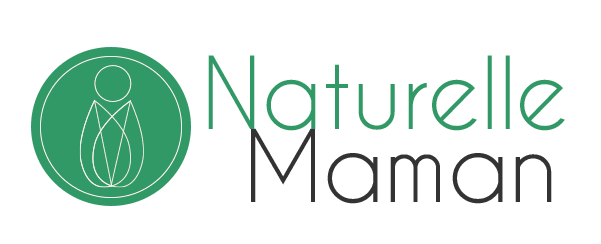






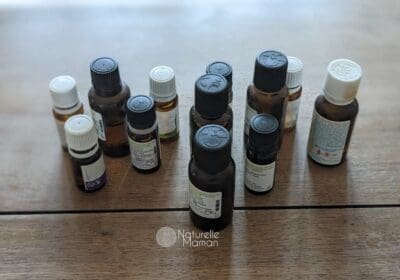






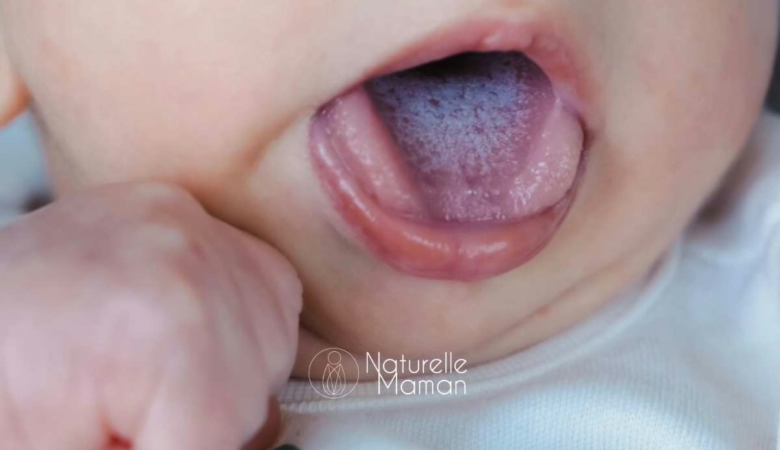




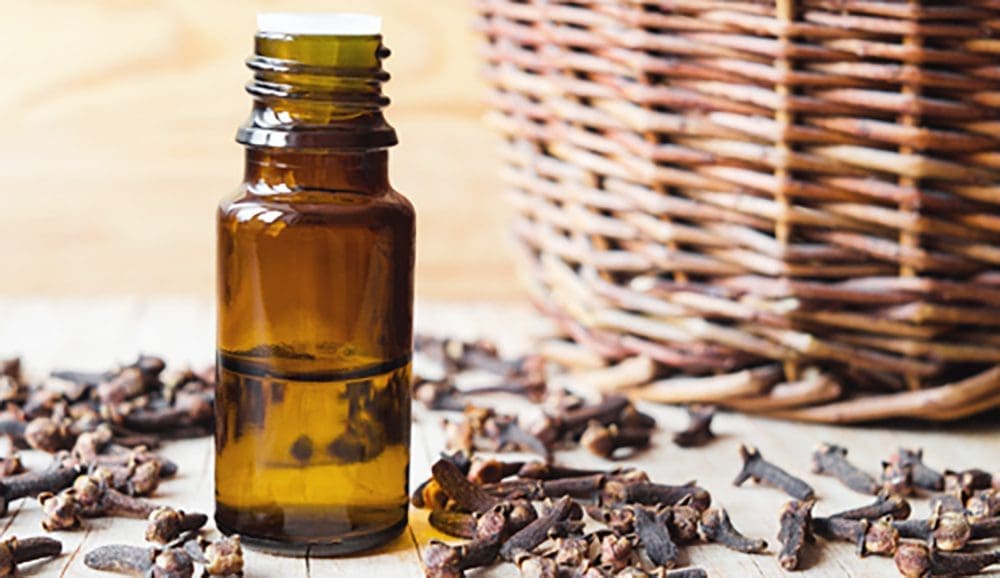


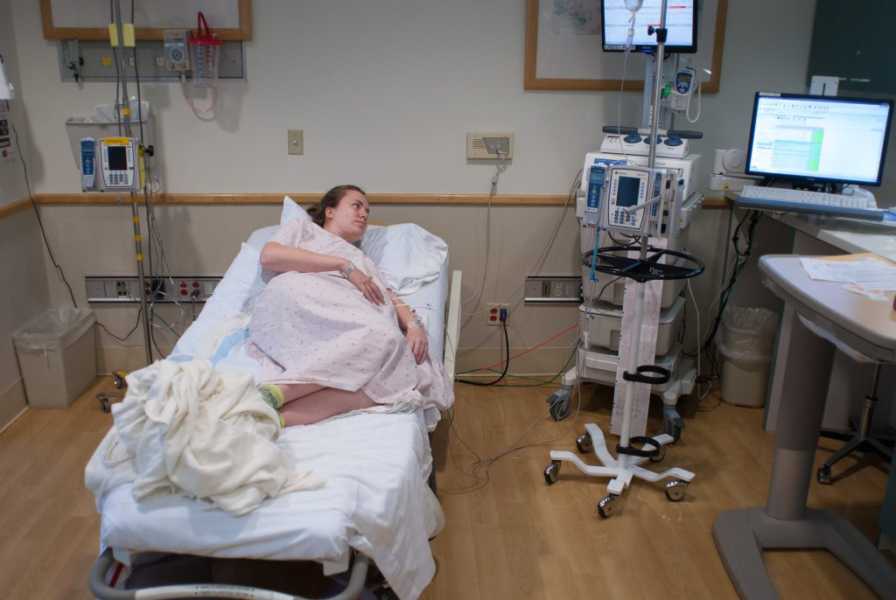
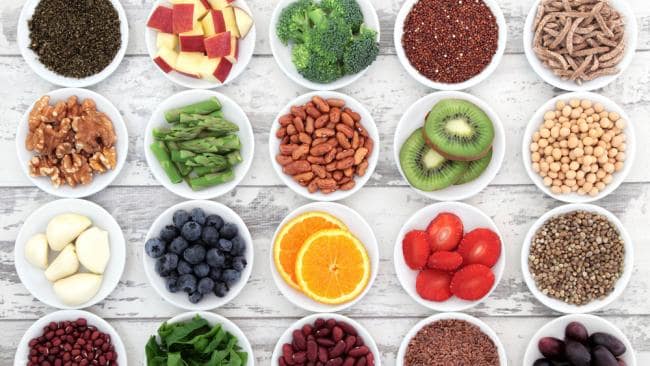


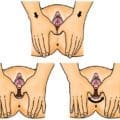


Hello Naturelle Maman,
J’ai allaité mes trois enfants pendant un peu plus de deux ans. Ils se sont sevrés naturellement quand ils en ont eu envie et je suis heureuse de leur avoir offert ce beau départ dans la vie pour leurs santés. Mais je ne savais pas que sa protégeait aussi ma santé et mon corps d’autant de maladies graves et chroniques. Je savais que ça faisait maigrir vite par contre. J’avais beaucoup mangé comme quatre, j’ai perdu beaucoup de kilos grâce à l’allaitement.
J’ai allaité mes 3 enfants dont le dernier qui a 17 mois et que j’allaite encore!
c’est un lien indescriptible qui se tisse avec son bébé.
Par contre je suis fatiguée car il se réveille plusieurs fois encore dans la nuit pour téter.